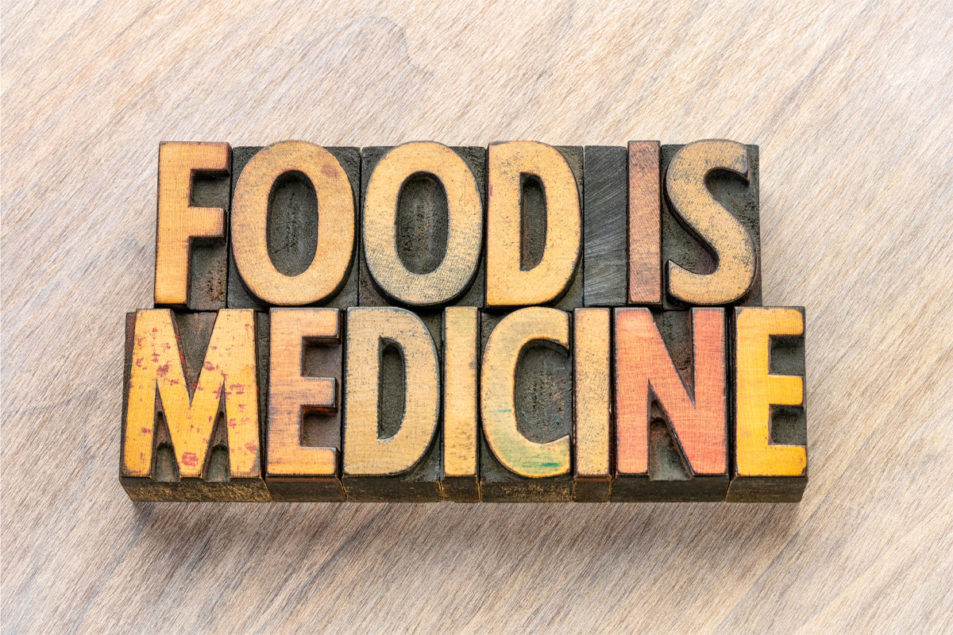
CHICAGO – Current conversations about the future of food tend to focus on the incorporation of such technologies as precision fermentation and artificial intelligence, as well as the use of more sustainable farming practices. Dietitians and some doctors want to see “food is medicine” incorporated into the dialogues, and it’s happening.
January 2024 ended with the US Department of Health and Human Services hosting its first Food is Medicine Summit, and, in April, the Food is Medicine Institute at Tuft’s University hosted its second annual Food is Medicine National Summit. More recently, the Food as Medicine Summit was held in Chicago during the inaugural Future-of-Food Week held May 20-24. During the gatherings, nutritionists explored the link between nutrition and health and the role easy access to better-for-you foods plays in wellness and disease prevention.
Whether the terminology is “food is medicine” or “food as medicine,” those dedicated to the movement agree food choices and food security need to become part of policy in the United States.
“For many communities around the world, this is nothing new,” said Danielle Nierenberg, president, Food Tank, Baltimore, when speaking at the Chicago event. “Food has been used to treat and prevent diseases in various cultures for generations. But in medical schools in the US, according to the Food is Medicine Institute, less than 1% of lecture hours are dedicated to nutrition.
“Creating health care and food policies and programs that recognize the connections between well-being and nutrition security can be truly transformative and save lives. We have to remember these are structural issues, not diseases brought about exclusively by poor personal choices or a lack of education or awareness.”
Some consumers in the United States live in a world where nourishing, fresh foods may be inaccessible or unaffordable, Nierenberg said. The food industry can assist.
“Good food is medicine interventions can take many different forms, from medically tailored meals and groceries to produce prescriptions to stronger nutrition security and food relief programs,” she said. “As an example of how economically successful food is medicine can be, let’s look at produce prescriptions. A national produce prescription program, which would provide eligible folks with discounted or free fruits and vegetables alongside community-based nutrition education, would save about $40 billion in health care costs every single year.”
Sherry Frey, vice president of total wellness, NielsenIQ, Chicago, said, “Many Americans can’t escape the cost-of-living crisis. Inflation impacted ‘better for’ trends in the past year.”
Oddly enough, she explained, research shows people have been willing to spend more money on their pets than on fresh fruits and vegetables.
“Lower-income households continue to struggle to buy healthier food,” Frey said, adding, “The largest gaps are in fruits and vegetables.”
She explained that thanks to innovation by some food manufacturers, there have been positive improvements in whole grain consumption among lower-income households. But there still is room for improvement.
“We know food and nutrition is highly effective to prevent, manage and treat chronic disease, but only when the approach is evidence-based,” said Krista Toder, chief operating officer, Eat Ahara, Los Angeles. Her organization’s mission is to make health more equitable by accelerating access to culturally relevant food and nutrition in dignified ways.
“The question is, ‘How do we make the affordable choice, the healthy choice?” she said.
NielsenIQ research shows low-income households are looking for products to meet immediate needs. The demographic indexes higher than the total population for foods and beverages that support pregnancy and lactation, muscle health, sleep support and diabetes support.
“According to Cornell research, we make over 200 food-related decisions per day, and small changes add up over time,” said Kerry Hackworth, director of nutrition affairs, National Dairy Council, Rosemont, Ill. “This means that achieving health — and the food is medicine movement — shouldn’t just focus on eating more plants and produce. The Dietary Guidelines for Americans provides recommendations for healthy eating patterns and is put together every five years by experts in their field who look at the body of evidence to support the components of a healthy diet. Plants, in combination with animal-sourced foods, can fill nutrient gaps and help to prevent disease.”
Food manufacturers may assist by continuing efforts to reduce sugar, something that resonates with consumers, according to NielsenIQ research. And, once again, sodium is becoming a hot button, Frey said.
“While the ultra-processed dialogue may be confusing, it is likely to ramp up,” she said. “And at the same time, the demand for protein continues to grow.”
Frey said to expect “an increased focus on specific food ingredients.”
The scenario already is happening with some states banning certain additives.
Jill Davis, director of disease and case management and clinical nutrition, HealthPartners, a nonprofit health care provider and health insurance company in Bloomington, Minn., said consumers are not necessarily going to change their taste preferences and flavor cravings.
“Meet consumers where they are,” she said. “Don’t take away food consumers love but give them foods that love them.”
Marianne O’Shea, vice president of global health and nutrition sciences, PepsiCo, Harrison, NY, said, “Foods can be improved. It’s not easy to take sugar, sodium and saturated fats out of products (consumers love). But companies can add nutrients consumers are lacking.”
